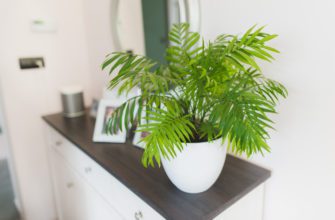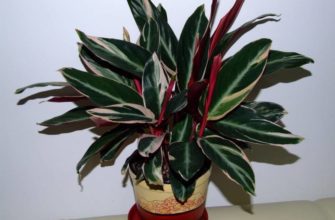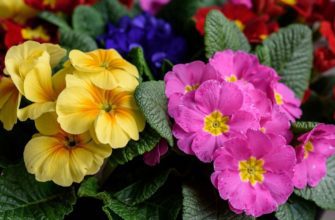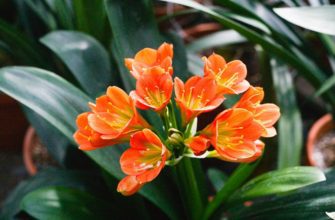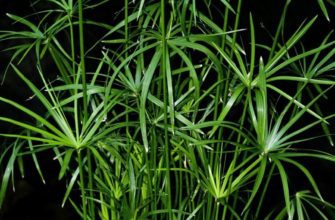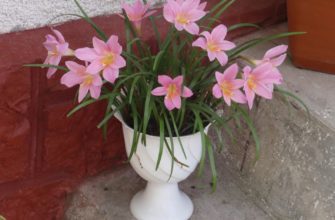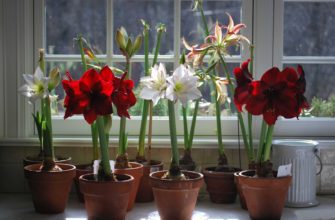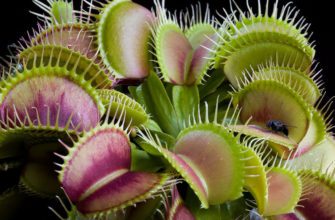Adenium, also known as desert rose or fatsmilk, is an amazing flower plant that is very popular as a houseplant. Its beautiful flowers and unique appearance attract attention and make it an ideal choice for interior decoration and creating an exotic atmosphere.
In this article, we will consider various aspects of caring for adenium, its signs and superstitions, as well as propagation options and a description of the main varieties. You will learn how to provide optimal conditions for the prosperity of adenium at home and make it delight you with its bright flowers.
We will cover the basic aspects of care, such as proper lighting, watering, temperature conditions and humidity, which are necessary for the health and prosperity of adenium. We will also discuss important signs and superstitions associated with this flower, which arouse interest and mysticism.
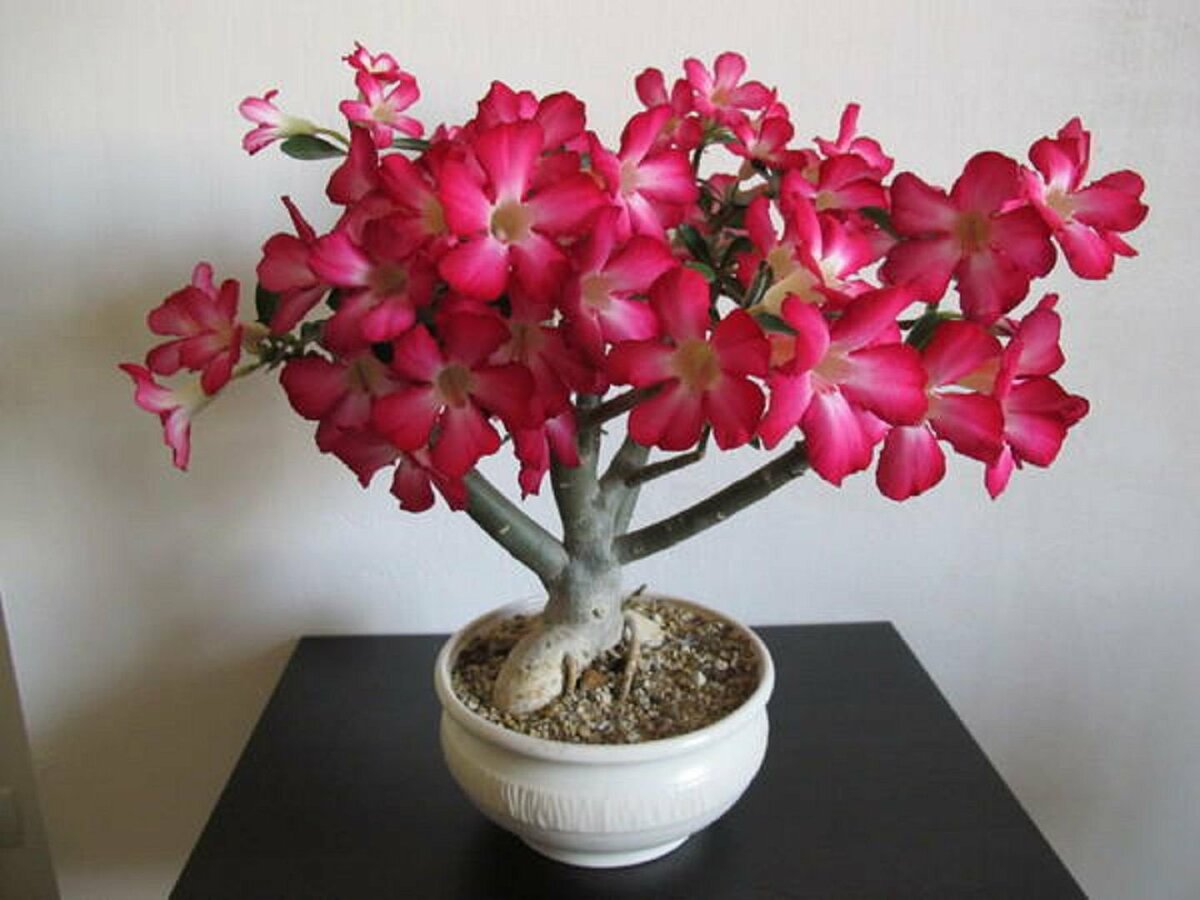
Description of the appearance of adenium and its flowers
The adenium flower is a delightful plant that attracts attention with its unique appearance and beautiful flowers. Let's describe its characteristic features in more detail.
Adenium is a perennial succulent that has thick, succulent stems and brightly colored leaves. The size and shape of the plant can vary depending on the variety and age. An adult adenium can reach a height of up to 1 meter, but there are also more compact varieties that are suitable for indoor growing.
One of the characteristics of adenium is its rounded and uneven root collar, which serves as the basis for stems and leaves. Adenium stems can be branched or single, with a smooth or uneven surface. They can have different shades, from light green to gray-brown.
Adenium leaves are elliptical or lanceolate in shape. They are often clustered at the tops of the stems and may be covered with fine hairs. The leaves may be green or have various shades such as silver, red or purple. Some varieties of adenium may have attractive patterns or stripes on the leaves.
However, the most amazing and attractive feature of adenium is its flowers. They are usually large and can have a diameter of up to 10 cm. Adenium flowers can be single or collected in inflorescences.
Their shape can be bell-shaped, rosette-shaped or star-shaped. The color range of adenium includes a wide range of shades, such as white, pink, red, purple, orange and even two-color combinations.
Some varieties of adenium have particularly bright and saturated colors of flowers, which can attract attention from a considerable distance. In addition, adenium flowers can retain their beauty and brightness for a long time, which makes it especially attractive.
Overall, adenium is a plant with an elegant and unusual appearance. Its thick stems, bright leaves and large flowers make it a wonderful decoration for your home or garden. If you are looking for a plant with an original appearance and bright flowers, adenium will be the perfect choice for you.
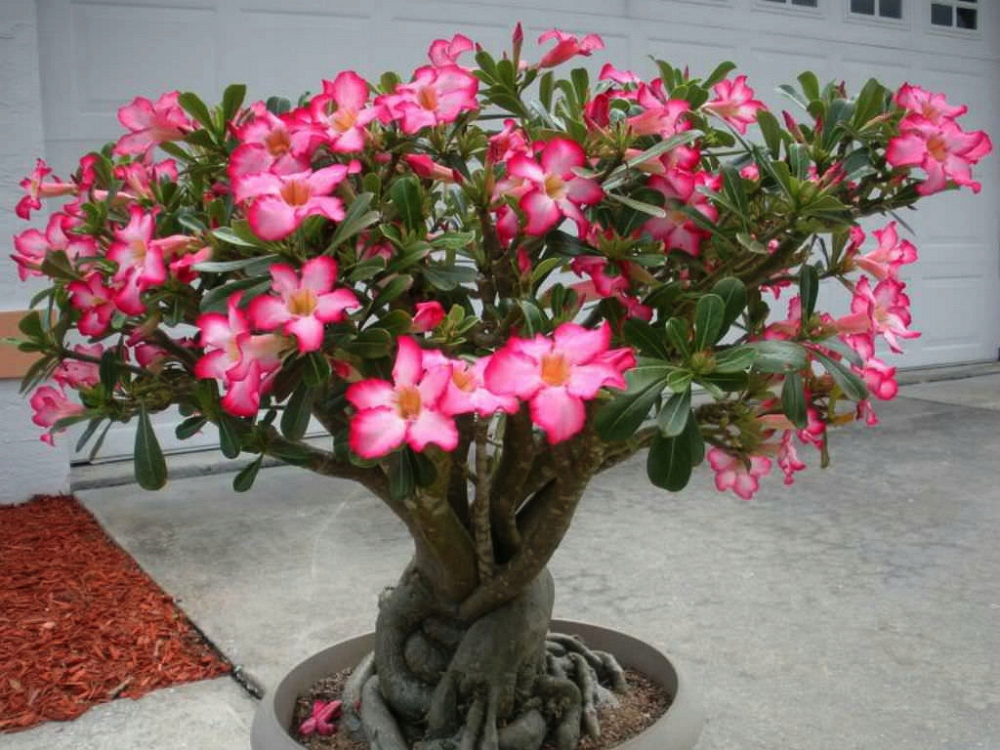
Features of the structure and shape of the adenium flower
Adenium flowers are an amazing combination of slenderness and grace with bright colors and delicate petals. Adenium or the Tree of Life, as it is called, grows in tropical and subtropical regions such as Africa and the Arabian Peninsula.
It attracts attention with its bright colors, making us wonder how its flower is structured. The structure of the adenium flower starts from its base, known as the peduncle or stem.
The adenium flower has 5 petals, each of which can be painted in different shades: from red to pink, white and even yellow. The petals can be smooth or have some patterns and pores, which adds additional charm to the appearance of the flower.
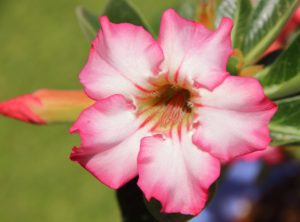 The central part of the Adenium flower is filled with long stamens, which emanate from a stamen head in the center of the flower. After pollination, for example by insects, the stamens begin to break off to make way for the ripe fruit.
The central part of the Adenium flower is filled with long stamens, which emanate from a stamen head in the center of the flower. After pollination, for example by insects, the stamens begin to break off to make way for the ripe fruit.
They can be up to 20 cm long and contain numerous thin eggs that contain seeds. Adenium flowers can have different shapes, which depend on the breed and genetic factors.
For example, some forms include simple pink flowers known as "Rose", which have rounded petals and a single flower per stem. Other forms are double-flowered, which have a more complex structure consisting of several layers of petals.
Some species have a star-shaped flower, while others have a wavy shape. Additionally, some varieties of adenium have interesting additional features, such as spikes on the stem, unusual patterns on the petals, and unusual structures in the center of the flower.
In general, the structure and shape of the adenium flower depend on many factors, including the breed, genetic factors, and environmental conditions. Each flower has its own unique features that are so characteristic of adenium.
Adenium care
Caring for the adenium flower is an important aspect for its health and beautiful appearance. The plant, also known as desert rose or fatsmilk, is a succulent and requires a special approach to care.
Let's look at some key aspects of flower care to ensure optimal conditions for it.
- Lighting: The adenium flower requires bright but diffused light to grow and thrive. Place the plant on a window that receives sufficient light, but avoid direct sunlight in the middle of the day to avoid leaf burns. If you do not have a suitable window, you can use artificial lighting such as phytolamps.
- Watering: The plant is a succulent and stores water in its thick stems and roots. Water the plant sparingly, allowing the soil to dry out between waterings. It is important not to overwater the soil to avoid root rot. In winter, adenium requires less water because it is dormant.
- Temperature and humidity: The flower prefers a warm climate and moderate temperatures. The optimal temperature for adenium is about 20-30°C during the day and 15-20°C at night. It can tolerate higher temperatures, but avoid extreme values. Relative humidity is not a decisive factor, but additional moisture near the plant can be useful, especially in dry conditions or when using heating.
- Top dressing: Adenium does not require frequent fertilizing, but during the active growth period, which is usually in the spring and summer, it is recommended to fertilize the plant every two weeks. Use a low-nitrogen fertilizer, such as succulent fertilizer, according to the instructions on the package.
- Transfer: It is recommended to replant the adenium flower every 2-3 years, if necessary. Use well-drained soil for succulents and a container with holes to drain excess moisture. Replant the plant in the spring, before active growth begins.
- Trimming: Adenium can be pruned to form a beautiful crown and stimulate new growth. Trim the stems carefully using a sharp tool to avoid damaging the plant.
- Protection from pests and diseases: Adenium is generally resistant to pests and diseases, but can occasionally be attacked by hornets, aphids, or mealybugs. Clean the leaves of dust and apply appropriate control measures if insects or diseases are found.
Caring for the plant requires attention and following recommendations, but with proper care you will be rewarded with beautiful flowers and healthy growth.
Remember that each plant is individual, and some adeniums may have their own characteristics. Monitor the plant's reaction to care and adjust it according to the needs of your flower.
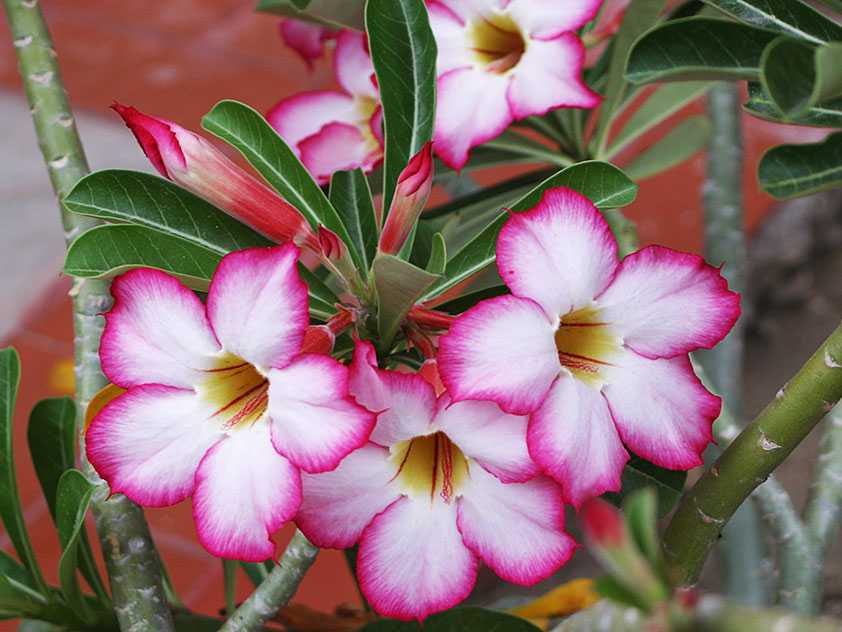
Reproduction and cultivation of adenium
Adeniums are beautiful flowers that can grow and thrive in warm, sunny climates. They can be grown both indoors and outdoors, but to achieve beautiful, healthy blooms, they need to be propagated and grown correctly.
Adenium can be propagated in three ways: cuttings, seeds or grafting. Propagation by cuttings is the most popular method, as this method ensures faster and more reliable growth.
The flower stalk is cut from the bottom and separated from the stem with a sharp knife. The cuttings are then planted in a light, well-drained substrate and left in the shade for up to 14 days until new signs of growth begin to appear.
Growing adeniums outdoors is only possible in warm climates with air temperatures of at least 10-12 degrees Celsius. In cold climates, they should be grown on a windowsill or in a greenhouse.
As a rule, adenium loves light and the best place for growing is a window on the south side of the house, where maximum access to sunlight is provided. Fertile soil with good drainage and a small amount of sand is suitable for growing adenium.
It is recommended to add humus or other organic materials. Adeniums do not require abundant watering, keep the soil slightly moist, but do not flood.
In conclusion, it is important to remember that adeniums are flowers that require special care and attention. They can bring a lot of joy and pleasure to their owners if grown correctly.
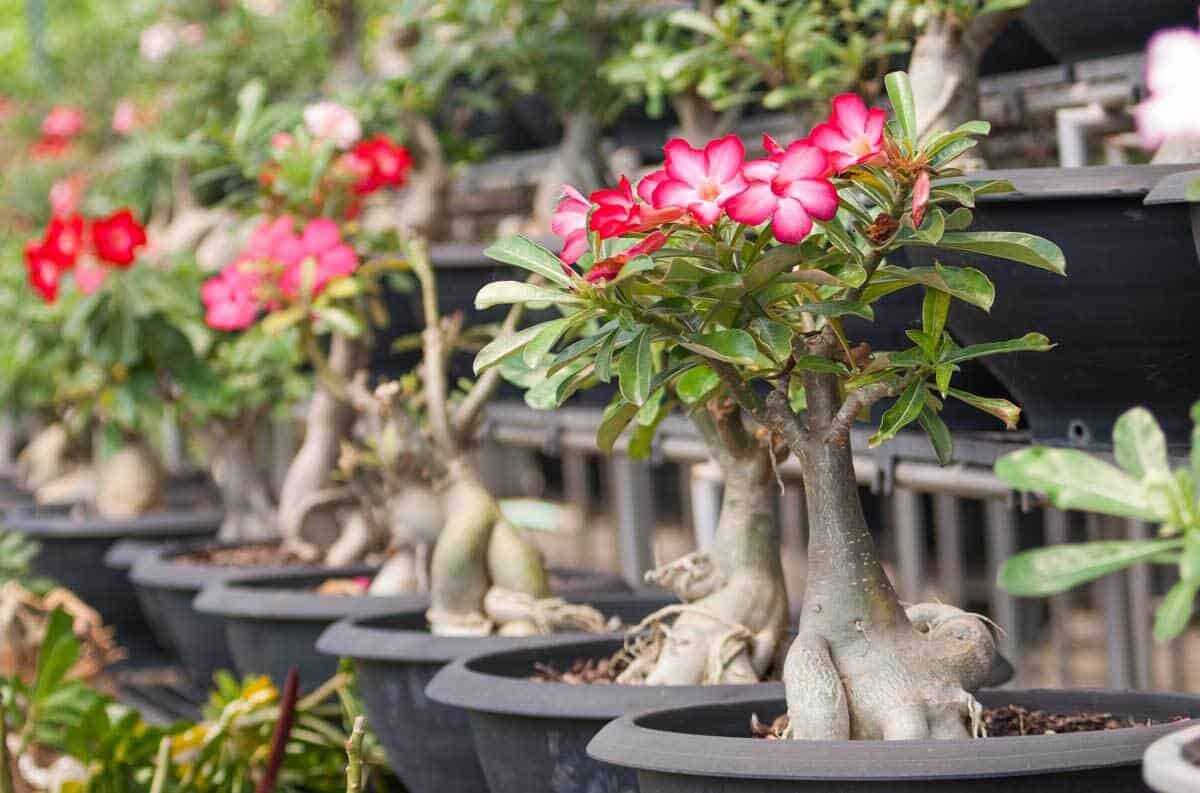
Features of adenium
Adenium, also known as desert rose, is a beautiful and exotic flower that attracts attention with its unusual shape and bright colors. Here are some features of adenium that make it unique:
- Appearance: Adenium has a characteristic succulent shape with a thick stem that can be thickened and bottle-shaped. It usually bears small, green leaves that may fall off during the dormant season. The main attraction of the plant is its flowers. They can be of various shapes and sizes, but most often have a funnel-shaped or trombose structure with five rounded petals.
- Variety of colors: Adenium flowers are striking in their variety of colors. They can be red, pink, white, orange, purple, and even multi-colored. Often, the flowers have a bright central dot or stripes on the petals, which adds to their attractiveness.
- Adaptation to harsh conditions: These flowers naturally originate from the dry and hot regions of Africa and the Arabian Peninsula. Their ability to survive in such conditions makes them excellent plants to grow in arid regions or where access to water is limited. Adeniums have the ability to store water in their thick stems and leaves, which allows them to survive periods of drought.
- Flowering and flowering duration: The plant can flourish with amazing blooming and duration. It can bloom for several weeks or even months, offering its colorful flowers. Flowering usually occurs in the warm season, but some varieties can delight with their flowers all year round.
- Care and cultivation: Adeniums require some care to thrive. They prefer full sun and well-drained soil to avoid root rot. As succulents, they have the ability to survive periods of drought, but need regular watering while actively growing. It is also important to provide them with adequate warmth and protection from cold temperatures.
Adeniums are unique and beautiful flowers that can become a bright decoration of your garden or interior. Their exotic appearance and rich colors will not leave indifferent lovers of flowers and nature.
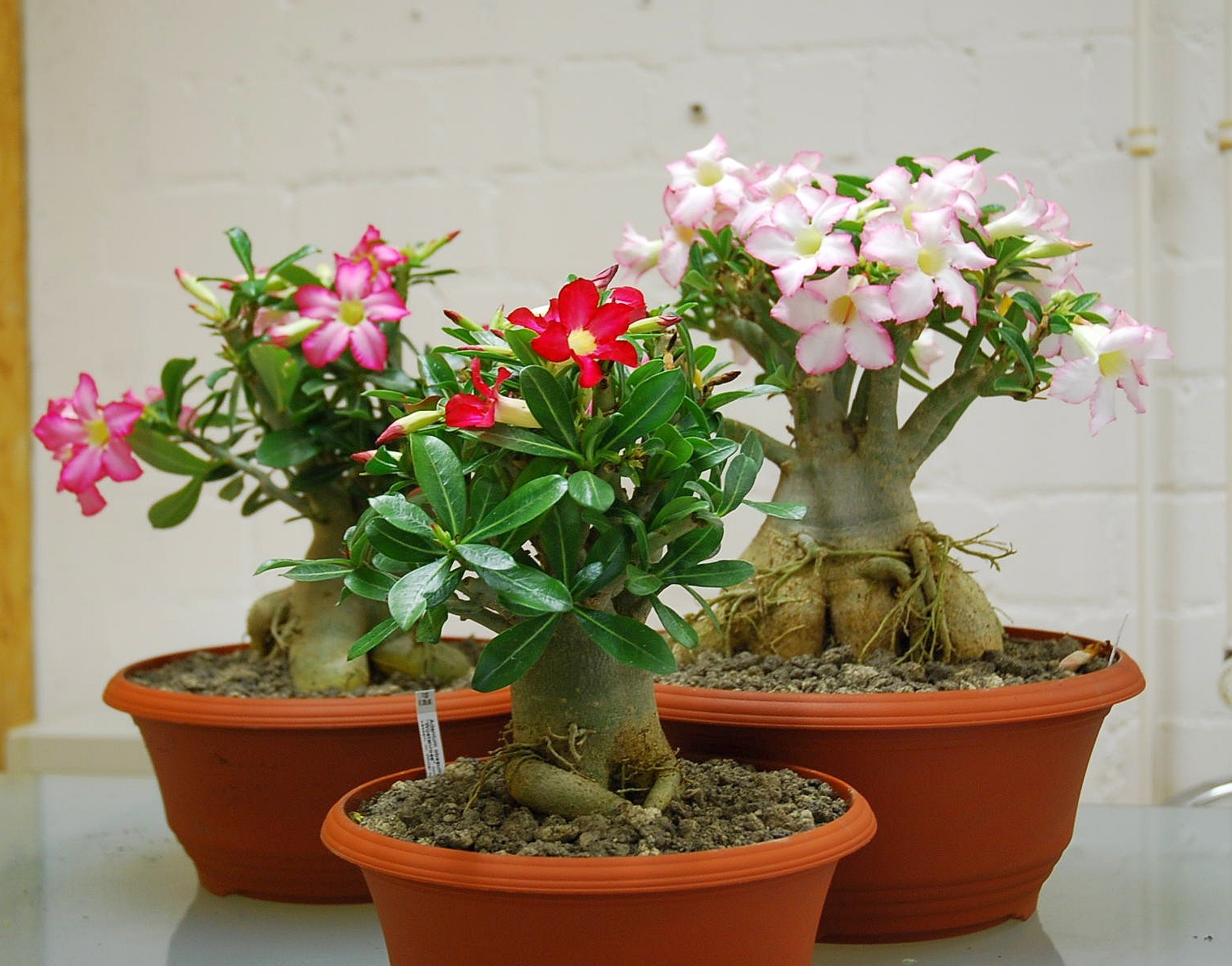
Varieties and types of adenium
The natural habitat of this plant is Africa and Arabia, but currently adeniums are grown almost all over the world as indoor, garden and ornamental plants.
There are many different varieties and types of adenium, each with its own characteristics and features. One of the most popular varieties of adenium is the common adenium (Adenium obesum).
This variety is characterized by high drought resistance and high heat resistance. It is obsessed with foliage to flaunt the highest witch magic, and flowers - to delight and enchant with their tenderness and uniqueness. Flowers can be simple or double, from 4 to 10 cm in diameter. They can have various shades, including white, pink, red and purple.
Another popular variety of adenium is Adenium intermediate. It is known for its large, double flowers of purple and pink colors, as well as high resistance to diseases and pests.
Unlike the common variety, Intermedius requires higher humidity and is watered more often. Another type of Adenium is A. socotranum, the largest and rarest of all Adenium species.
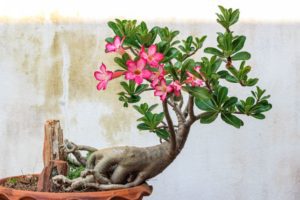 This plant can reach a height of up to 8 meters and has smooth, dense trunks and red flowers. This type of adenium can only be grown in greenhouse conditions, as it requires a certain temperature and humidity.
This plant can reach a height of up to 8 meters and has smooth, dense trunks and red flowers. This type of adenium can only be grown in greenhouse conditions, as it requires a certain temperature and humidity.
Other popular varieties of adenium include: Adenium fransisae, Adenium crispum and Adenium hiroshii.
Each of these varieties has unique characteristics and, depending on growing conditions, can change its appearance and flower color.
The plants are available in a wide range of different species and varieties, each with its own characteristics and colorful palette of flowers. Choosing which species or variety of adenium to choose depends on your personal preference and the growing conditions of the plant in your region.
Problem solving and difficulties with adenium
Dealing with the problems and difficulties associated with growing adenium can be an important aspect of successfully caring for these flowers. Here are some common problems you may encounter and their solutions:
- Wilting of leaves: If your adenium leaves are turning pale, yellow, or starting to fall off, it may be due to a lack of water or too much water. The solution may be to adjust the watering dosage according to the needs of the individual plant and the environmental conditions. It is recommended to water adeniums only when the soil is completely dry between waterings.
- Root rot: Incorrect soil drainage or overwatering can cause adenium roots to rot. To prevent this problem, use a well-drained soil containing perlite or sand to ensure excess moisture drains away. It is also important to avoid standing water in the tray or pot.
- Bud drop: If your adenium buds start to drop before they open, a possible explanation could be a lack of light or improper temperature conditions. Make sure your plant is getting enough bright, direct sunlight and that the temperature is within the optimal range for adenium growth (usually between 20 and 30 degrees Celsius).
- Pest attacks: Adeniums can be attacked by various pests, such as aphids, spider mites or mealybugs. If you notice signs of pests, it is recommended to use appropriate insecticides or detergents designed specifically to combat these pests. You can also try using gentle natural methods of control, such as treating the plant with a soap solution or spraying with chamomile or garlic infusion.
- Rest period: Adeniums periodically go into a dormant state, when they may lose their leaves or stop blooming. This is a natural process, and during this period the plant needs less watering and rest. It is important to provide the flower with enough light and protect it from the cold.
However, in addition to these common problems, there are other difficulties that you may encounter in the process of growing adenium.
In such cases, it is useful to consult gardening resources, forums, or consultants who specialize in flowers and succulents to get additional tips and advice on how to solve a specific problem.
The importance of proper care for adenium
This plant requires special care. Despite the fact that it is very beautiful and decorative, improper care can lead to the plant becoming weak and possibly dying.
In this context, the importance of proper care for adenium cannot be underestimated. Proper care for adenium begins with the correct location of the plant. It should be placed in a bright place, but protected from direct sunlight. It is not recommended to place adenium near an air conditioner or other source of cold air.
A necessary condition is to ensure optimal air temperature and sufficient humidity. An important part of caring for adenium is proper watering.
It depends on the season, soil type and growing details. During the growth and flowering period, the plant should be watered regularly but moderately to avoid root rot.
During winter, adenium needs less frequent watering, but without allowing the soil to dry out, to avoid root death. It is also important to provide the plant with proper nutrition using appropriate fertilizers rich in potassium and phosphorus.
Some forms of adenium may also be sensitive to diseases, moderate ventilation and insects. All of the above care measures are necessary to maintain the health and beauty of adenium.
Proper care of the plant not only allows it to flourish, but also ensures its whimsicality and originality. However, without proper care of the adenium, the plant can be exposed to various diseases and become very easily affected.
For this reason, the importance of proper care for adenium cannot be underestimated. As a result of proper care, its lifespan can exceed 20 or even 30 years and bring great joy and pleasure to the person caring for it.

